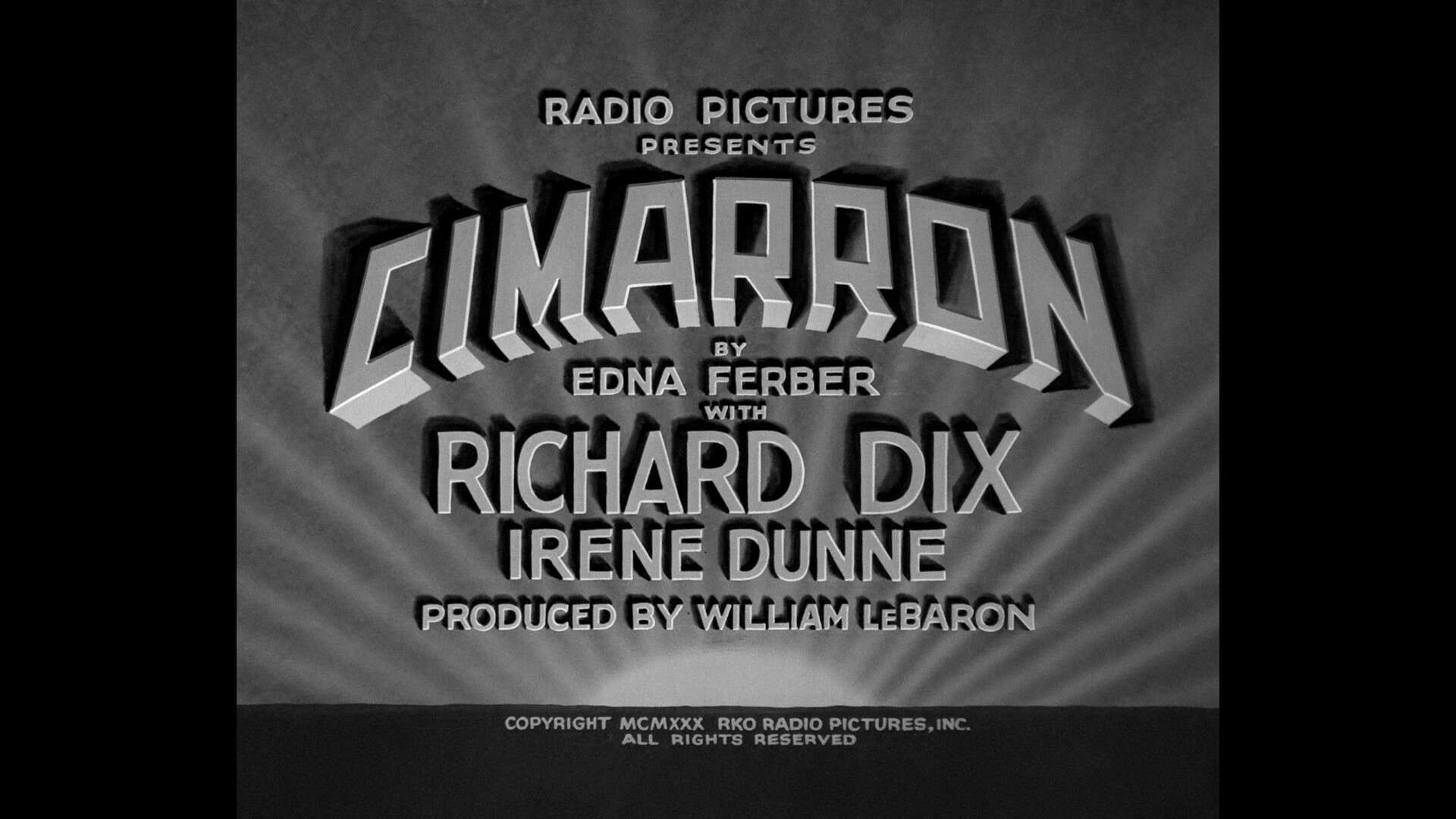Westerns ruled Hollywood in the early 1930s, as studios churned out oaters to meet audience demand. RKO Pictures aimed to produce the definitive frontier epic with 1931’s Cimarron, adapted from Edna Ferber’s bestselling novel. The lavish blockbuster paid off, winning 3 Oscars including Best Picture. But over subsequent decades, Cimarron faded into obscurity compared to peers like Stagecoach. Now on Blu-ray from Warner Archive, RKO’s forgotten widescreen spectacle reveals merits still deserving recognition.
![Cimarron (1931) [Warner Archive Blu-ray review] 2 Cimarron (1931) [Warner Archive Blu-ray review] 1](https://andersonvision.com/wp-content/uploads/2023/08/cimarron-1931-warner-archive-bluray.jpg)
An A-List Production
RKO entrusted its prestigious literary adaptation to director Wesley Ruggles, known for brisk pacing and heartfelt Americana. To realize Ferber’s sweeping generational tale, no expense was spared. Dynamic camera movement and pioneering sound design aimed to fully immerse the viewer. Impressive action scenes captured mile-long wagon trains, stampedes, and massive shootouts. The film cost over $1.5 million, a towering sum in 1931.
Leading the top-tier cast was Richard Dix, playing pioneering settler Yancey Cravat. Dix brought rugged masculinity honed in dozens of silent films, ideal for portraying Cravat from youth through old age. Equally compelling was Best Actress winner Irene Dunne as Yancey’s long-suffering wife Sabra. Dunne beautifully conveyed Sabra’s transformation from meek spouse to iron-willed community leader when necessity demands. Their evolving relationship gives Cimarron a strong emotional core.
Supporting players included western veteran Estelle Taylor and future stars William Collier Jr. and Dennis O’Keefe. All helped create a lived-in sense of Oklahoma history unfolding. But the real star was RKO’s audacious widescreen shooting process, dubbed “Grandeur”. The experimental 70mm format sought to combat growing popularity of television with an immersive theatre experience.
![Cimarron (1931) [Warner Archive Blu-ray review] 4 Cimarron (1931) [Warner Archive Blu-ray review] 3](https://andersonvision.com/wp-content/uploads/2023/08/cimarron-1931-warner-archive-bluray-22.jpg)
Cimarron was Revolutionizing The Western
While not the first widescreen film, Cimarron helped pioneer the format still used in blockbusters today. RKO filmed simultaneous takes side-by-side on 65mm stock, yielding a 2.2:1 aspect ratio later cropped to 1.65:1. This expansive frame was well-suited to capturing Ruggles’ extensive montages and sprawling landscapes. The director maximized Grandeur’s scale for dazzling visual sequences.
But Cimarron broke ground narratively too, approaching the Western from a progressive feminist viewpoint. Irene Dunne’s Sabra Cravat emerges as the film’s central character, evolving from shy schoolmarm to fearless entrepreneur, activist and politician. Her prominence feels downright subversive for 1931, giving Cimarron a surprisingly modern resonance.
While creaky in places, Ferber’s soapy storyline still manages to critique ingrained genre tropes. Yancey’s casual racism and chauvinism are framed as flaws rather than western heroism. And Sabra’s perseverance exposes frontier myths of helpless pioneer women. Ruggles’ loyalty to the source material made Cimarron startlingly ahead of its time.
![Cimarron (1931) [Warner Archive Blu-ray review] 5 cimarron 1931 warner archive bluray (21)](https://andersonvision.com/wp-content/uploads/2023/08/cimarron-1931-warner-archive-bluray-21.jpg)
Stunning Restoration On Blu-Ray
After decades relegated to subpar prints, Cimarron finally receives a pristine home video release courtesy of Warner Archive’s 4K restoration. The 1.37:1 black-and-white photography offers ravishing clarity and contrast. Details obscured for generations pop beautifully, from facial expressions to ornate set design. Film grain has been retained for a lovely cinematic appearance.
The 2.0 mono DTS-HD Master Audio track also impresses, with robust dynamics showcasing the pioneering sound design. Custom foley effects place the viewer right amidst stampeding bison and roaring crowds. The stereo mix takes full advantage of newly separated elements. For a 91 year old soundtrack, Cimarron enjoys outstanding fidelity here.
Rounding out the package is an essential audio commentary providing crucial context. Western film experts explore the film’s advances in technology and narrative voice, while noting unfortunate dated elements. Their insights help modern viewers appreciate Cimarron on its own terms as a complex mixed bag. The commentary better situates the film historically for first-time viewers.
![Cimarron (1931) [Warner Archive Blu-ray review] 7 Cimarron (1931) [Warner Archive Blu-ray review] 6](https://andersonvision.com/wp-content/uploads/2023/08/cimarron-1931-warner-archive-bluray-20.jpg)
Cimarron was an Important Step in Hollywood Evolution
Viewing Cimarron today, it’s clear why the film doesn’t hold up as seamless entertainment. Stilted acting styles and uncomfortable race caricatures inevitably jar modern sensibilities. But just as clearly, Cimarron deserves renewed respect as a pioneering Western both stylistically and thematically.
As an early experiment in widescreen processes, the film helped expand cinema’s visual vocabulary. Cimarron’s feminist perspective and critique of Manifest Destiny also feel downright radical given its 1931 release. The Western genre was never the same again, as later masterworks built upon its innovations.
Flawed but fascinating, Cimarron traces Hollywood’s ongoing evolution at a pivotal junction. Warner Archive’s Blu-ray provides modern viewers an illuminating glimpse into the past, revealing an important but overlooked building block of the genre.

![The Broadway Melody (1929) [Warner Archive Blu-ray review]](https://andersonvision.com/wp-content/uploads/2023/08/the-broadway-melody-warner-archive-blu-ray-1.jpg)
![Du Barry Was A Lady (1943) [Warner Archive Blu-ray]](https://andersonvision.com/wp-content/uploads/2023/08/du-barry-was-a-lady-warner-archive-blu-ray-1.jpg)
[…] Du Barry Was A Lady (1943) [Warner Archive Blu-ray] Released: July 25, 2023 8Great Cimarron (1931) [Warner Archive Blu-ray review] Released: July 25, 2023 8.2Great The Broadway […]